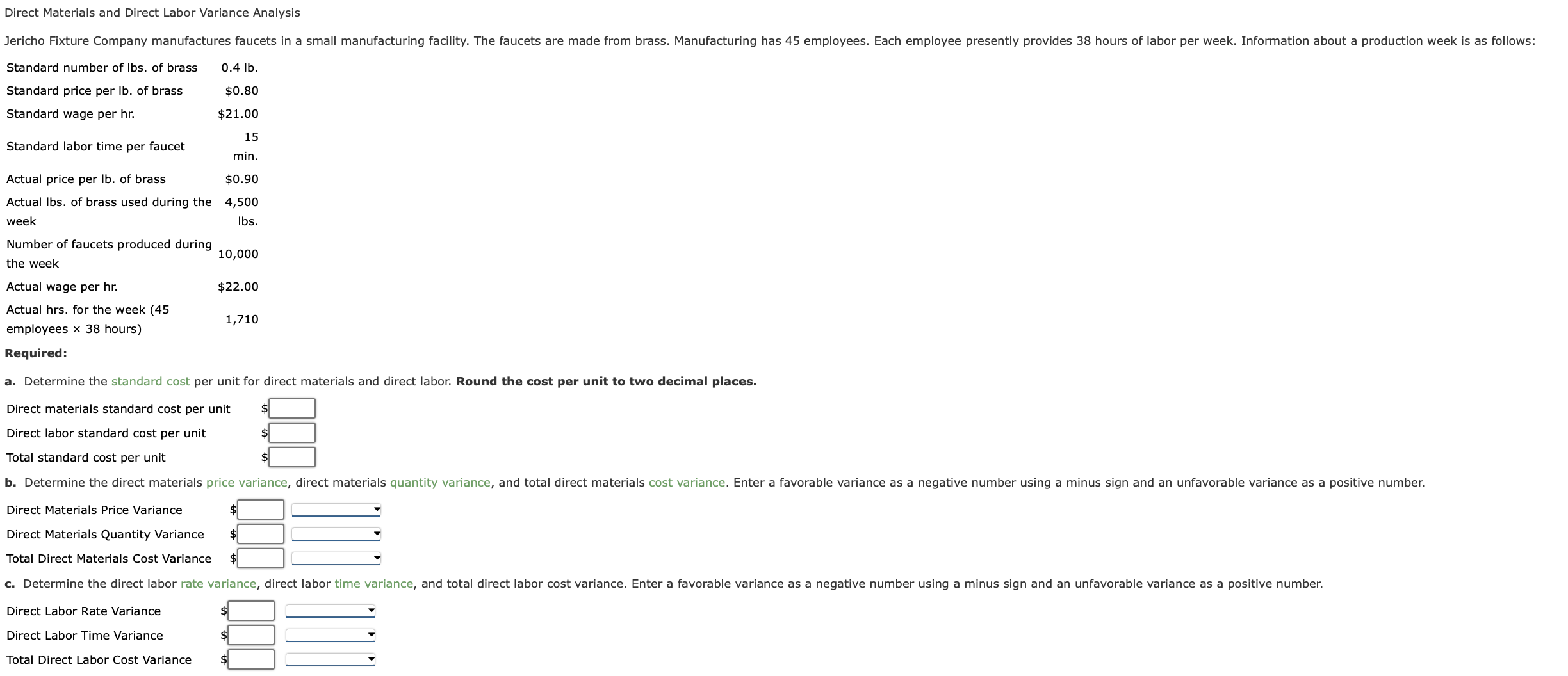
Labor mix variance is the difference between the actual mix of labor and standard mix, caused by hiring or training costs. Direct Labor Yield Variance (DLYV) is a measure of the difference between actual and expected labor costs, based on the number of units produced or services provided. If the total actual cost incurred is less than the total standard cost, the variance is favorable. Direct Labor Mix Variance can be used to make a product more cost-efficient, less wasteful of resources, and save time during production. It is used to increase the profits of the company by saving money on labor costs.
Examples to Illustrate Labor Efficiency Variance Calculation
- Calculate the labor rate variance, labor time variance, and total labor variance.
- By calculating it, you will pinpoint inefficiencies and make informed decisions.
- This calculation will help you to compare the labor hours you’ve budgeted with the hours actually worked.
- Another element this company and others must consider is a direct labor time variance.
- Reporting the absolute value of the number (without regard to the negative sign) and an Unfavorable label makes this easier for management to read.
- Usually, direct labor rate variance does not occur due to change in labor rates because they are normally pretty easy to predict.
Project deadlines are becoming tighter, and the rising cost of skilled labor, understanding and improving labor efficiency isn’t just a recommendation. The Human Resources and Accounting departments will set a standard cost for labor, and the budget will be built on that. A direct labor cost variance occurs when a company pays a higher or lower price than the standard price set. Effective labor variance management is not a one-time task but an ongoing process. Companies should continuously monitor labor variances to ensure that labor costs remain aligned with budgeted expectations.
Direct Labor Yield Variance FAQs
Higher-skilled workers may command higher pay rates than those budgeted for standard labor. Additionally, substituting higher-paid skilled labor for lower-paid workers can result in labor rate variances. Direct labor variance is a financial metric used to assess the efficiency and cost-effectiveness of a company’s labor usage.
What is the difference between labor yield and mix variances?

Like direct labor rate variance, this variance may be favorable or unfavorable. On the other hand, if workers take an amount of time that is more than the amount of time allowed by standards, the variance is known as unfavorable direct labor efficiency variance. They provide valuable insights into the effectiveness of a company’s labor cost control and workforce utilization. By regularly analyzing labor variances, companies can identify discrepancies between actual and budgeted costs, understand the root causes of these variances, and take corrective actions. This proactive approach not only helps in managing labor costs more effectively but also contributes to better budgeting, forecasting, and strategic decision-making.
Who is Responsible for the Labor Rate Variance?
In this case, the actual rate per hour is $7.50, the standard rate per hour is $8.00, and the actual hour worked is 0.10 hours per box. This is a favorable outcome because the actual rate of pay was less than the standard rate of pay. In this case, the actual hours worked are 0.05 per box, the standard hours are 0.10 per box, and the standard rate per hour is $8.00. This is a favorable outcome because the actual hours worked were less than the standard hours expected. According to the total direct labor variance, direct labor costs were $1,200 lower than expected, a favorable variance.
Who is Responsible for the Labor Efficiency/Usage Variance?
It gives you accurate data on direct labor hours, so you’ll be able to quickly identify inefficiencies and eradicate them before they impact the project’s budget. Several factors can impact your direct labor efficiency variance on the construction site. Understanding these can help you identify potential issues and implement corrective actions. Before we take a look at the direct labor efficiency variance, let’s check your understanding of the cost variance. Working conditions and employee morale play a significant role in labor efficiency.
Direct labor rate variance arise from the difference in actual pay rate of laborers versus what is budgeted. Before getting started, we wanted to offer an easy way to understand the concept of direct labor efficiency variance with this useful online calculator. Companies can reduce Direct Labor Mix Variance by more accurately predicting labor needs, using flexible staffing solutions, and making use of labor-saving technology.
At the end of the day, your business will grow only if you can get the most out of your workforce and minimize waste at the same time. With the right tools and practices, achieving optimal labor efficiency is not just possible; it is something that will arrive sooner or later. High productivity means workers complete tasks what is the distinction between debtor and creditor more quickly, potentially leading to favorable efficiency variances. Conversely, low productivity can result in unfavorable variances due to more hours worked than expected. Possible causes of an unfavorable efficiency variance include poorly trained workers, poor quality materials, faulty equipment, and poor supervision.
Leave A Comment